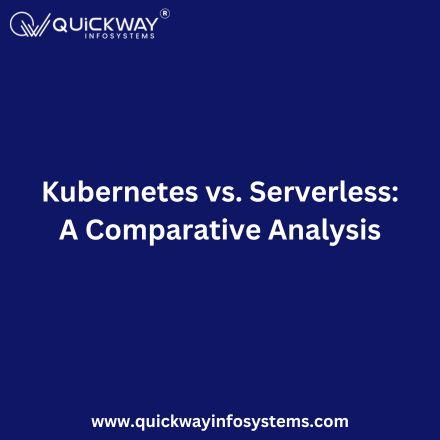Kubernetes and Serverless are two popular approaches to managing and deploying cloud-native applications. While they share the goal of simplifying application development and deployment, they differ significantly in their underlying architectures and use cases. This comprehensive guide will delve into the key differences between Kubernetes and Serverless, helping you choose the right approach for your projects.
Understanding Kubernetes
Kubernetes is an open-source container orchestration platform that automates the deployment, scaling, and management of containerized applications. It provides a declarative approach to defining desired application states and manages the underlying infrastructure to achieve those states.
Key Features of Kubernetes:
-
Self-Healing: Automatically recovers from failures by restarting failed containers or replicating services.
-
Declarative Configuration: Uses declarative configuration files to define desired application states, allowing for easier management and version control.
-
Horizontal Scaling: Can automatically scale applications up or down based on demand.
-
Service Discovery: Automatically discovers and registers services within a cluster.
Understanding Serverless
Serverless computing, also known as Function as a Service (FaaS), is a cloud computing model where you can run code without having to manage servers. You only pay for the resources consumed when your code is executed.
Key Features of Serverless:
-
Event-Driven: Serverless functions are triggered by events, such as HTTP requests, database changes, or scheduled events.
-
Scalability: Serverless platforms automatically scale resources based on demand, ensuring efficient use of resources.
-
Pay-per-use: You only pay for the resources consumed when your functions are executed.
-
Reduced operational overhead: No need to manage servers or infrastructure.
Kubernetes vs. Serverless: Key Differences
Infrastructure Management:
-
Kubernetes: You manage the underlying infrastructure (e.g., virtual machines, networking).
-
Serverless: The cloud provider manages the infrastructure for you.
Deployment Model:
-
Kubernetes: Deploy applications as containers within a cluster.
-
Serverless: Deploy functions as individual units of code.
Scaling:
-
Kubernetes: Offers granular control over scaling, allowing you to scale individual pods or entire applications.
-
Serverless: Automatically scales based on demand, eliminating the need for manual scaling.
Pricing:
-
Kubernetes: Pay for infrastructure resources, even when not in use.
-
Serverless: Pay only for the resources consumed when your functions are executed.
Complexity:
-
Kubernetes: This can be complex to manage, especially for large-scale applications.
-
Serverless: Generally simpler to set up and manage.
Choosing Between Kubernetes and Serverless
The best choice between Kubernetes and Serverless depends on your specific project requirements and goals. Consider the following factors:
-
Level of control: If you need fine-grained control over your infrastructure and application deployment, Kubernetes might be a better fit.
-
Scalability: If you expect your application to experience significant fluctuations in traffic, Serverless can offer automatic scaling benefits.
-
Cost: Evaluate the pricing models of Kubernetes and Serverless providers to determine the most cost-effective option for your project.
-
Team expertise: Consider your team's experience and familiarity with container orchestration and serverless technologies.
Looking for a top-tier web app development company to help you choose the right approach for your project? We offer expert guidance and tailored solutions to meet your specific needs.

